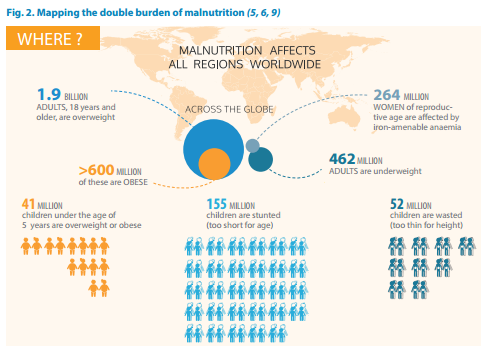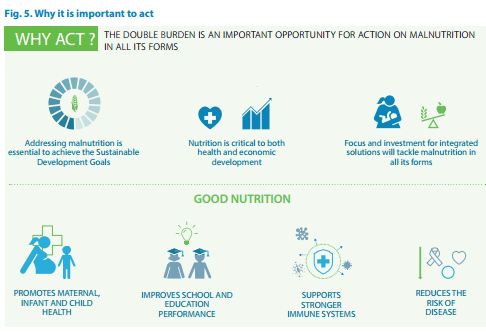I’m on the visionary panel. To register, click here.

The World Health Organization (WHO) has just published a series of papers on “double-duty” actions needed to end world malnutrition. By this, it means addressing not only classic undernutrition and its consequences (stunting and wasting of children, nutrient deficiencies and starvation in adults) but also obesity and its risks for chronic disease.
In a commentary on the WHO site and in The Lancet, Fracesco Branca, Alessandro Demaio, and Corinna Hawkes say:
This is the potential of “double-duty actions”—interventions, programmes, and policies that have the ability to simultaneously reduce the risk or burden of both undernutrition and overweight, obesity, or diet-related NCDs (noncommunicable diseases). Double-duty actions offer an integrated approach to addressing malnutrition. WHO proposes three levels for increasing the efficiency of nutrition actions through a double-duty approach.
The three levels are:
The WHO expands on these ideas in a policy brief.

They describe the interventions that can and should be taken in an action policy brief.

These are useful resources for anyone interested in and concerned about doing something about the double burden of malnutrition.
